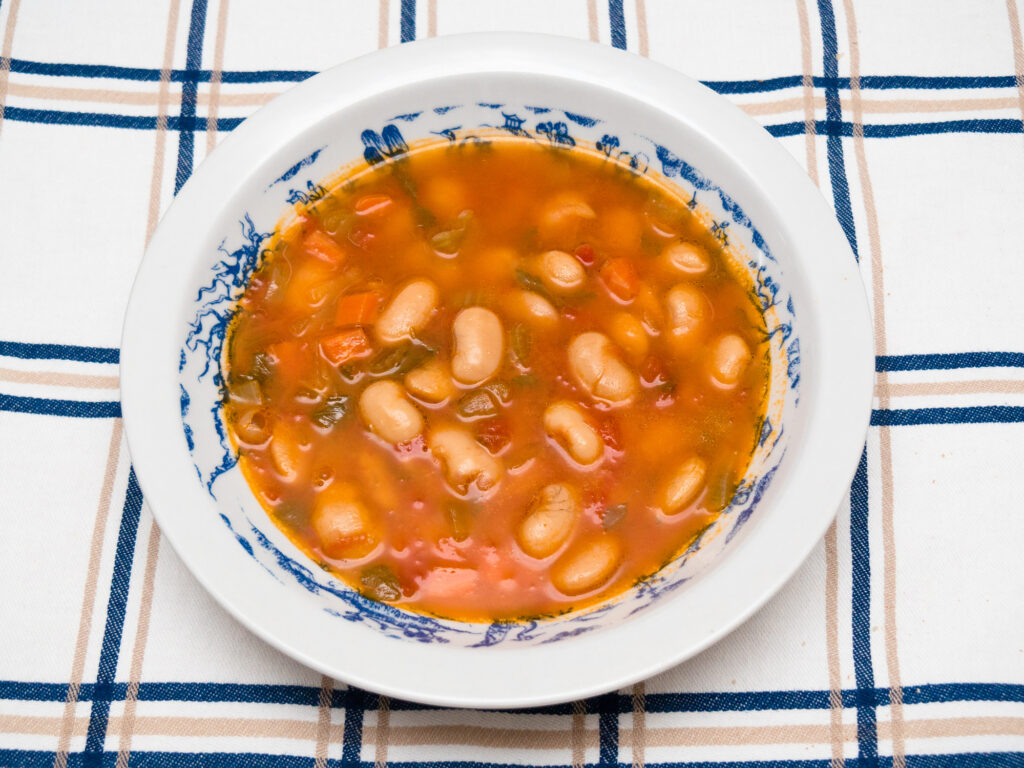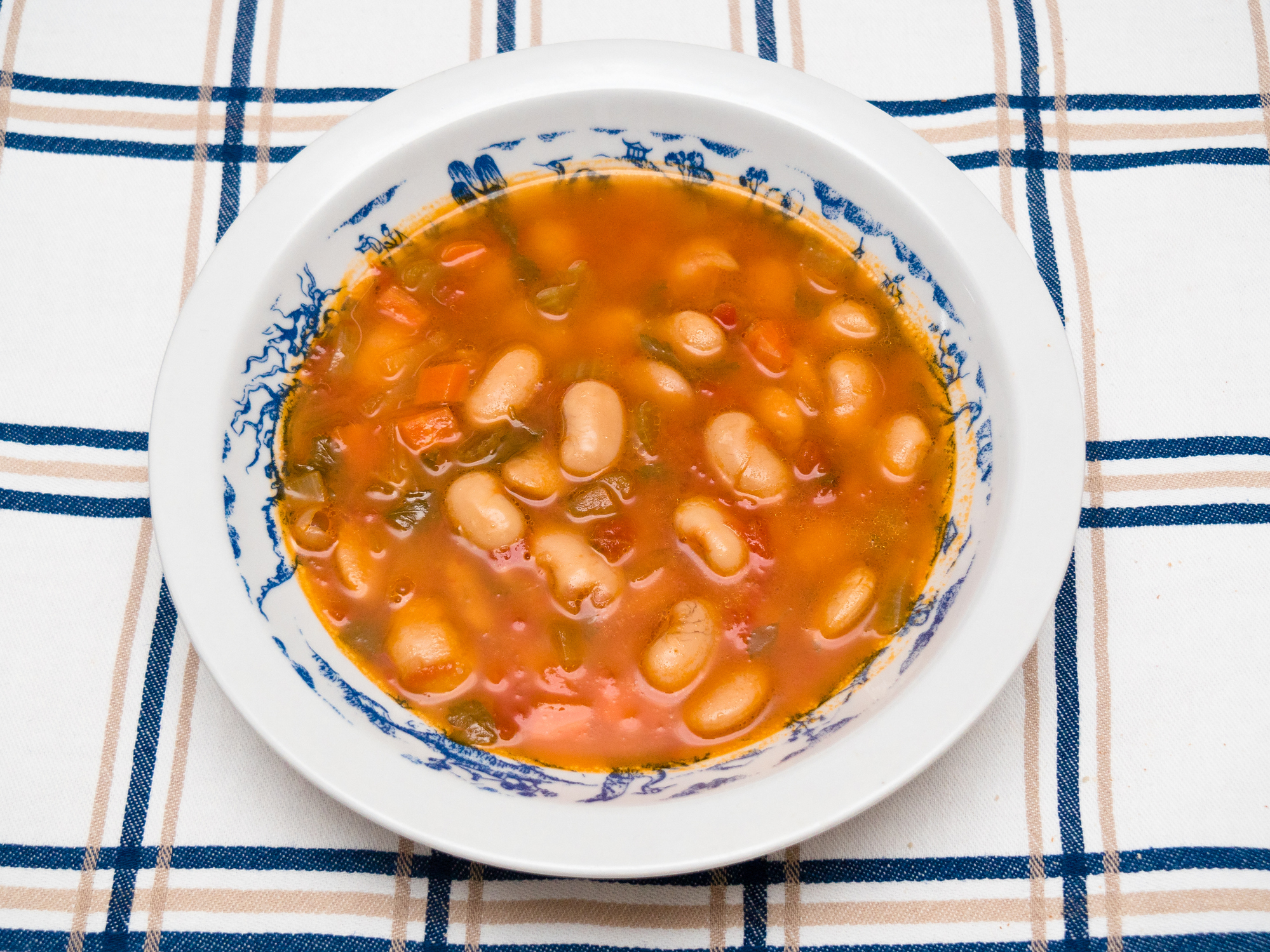Creamy and comforting, yet surprisingly complex for such a simple dish, fasolada is often referred to as the national dish of Greece.
But this isn’t a dish you’ll find at your average Greek restaurant –it’s a dish of born from scarcity, poverty, tradition, and resourcefulness.
A hearty soup of white beans, olive oil, vegetables, and herbs, fasolada has nourished Greeks for centuries, especially in times of hardship. Read on to learn more about this classic Greek comfort dish and explore its name, cooking variations, and regional look-alikes across neighbouring countries.

The Origins of Fasolada
Greek cooking website Katerina’s Kouzina has done a deep dive into the origins of fasolada, with a summary below:
Fasolada likely dates back to ancient times. It’s often associated with panspermia, an ancient Greek ritual dish offered to the god Apollo during the Pyanepsia festival, which celebrated the end of harvest. This precursor to fasolada was made from a mixture of legumes, grains, and vegetables.
As beans became more widely cultivated and accessible (particularly white beans introduced later through trade routes), the dish evolved into a simpler, more economical meal. During times of war, economic hardship, and fasting periods in the Greek Orthodox tradition, fasolada remained a staple due to its affordability and high nutritional value.
According to the author of Katerina’s Kouzina, the information was originally sourced on www.bluevillascollection.com, but Katerina’s Kouzina went even further by consulting an archeologist who said that white beans were not available in the time of Ancient Greece, however other beans were, so it may be that the ancient dish wash an ancestor dish. Interesting stuff!
What Does ‘Fasolada’ Mean?
The name fasolada (φασολάδα) comes from fasolia (φασόλια), the Greek word for beans. It directly translates to “bean stew” or “bean soup.”
It’s often confused with fasolia yiahni—another bean dish, but cooked with a tomato base and sometimes meat or potatoes. Fasolada, in its purest form, contains no meat and relies solely on the richness of beans, good olive oil, vegetables (usually carrot, celery, and onion), and sometimes tomatoes.
How Fasolada Is Made Today
The beauty of fasolada is in its simplicity. Here’s what goes into a traditional pot:
- White beans: Typically soaked overnight, then simmered until tender.
- Vegetables: Onion, celery, and carrot are staples.
- Tomato (optional): Some versions include tomato paste or fresh tomatoes for a richer flavor.
- Olive oil: Added generously, it’s key to the dish’s velvety texture.
- Seasoning: Bay leaves, salt, pepper, and sometimes parsley or oregano.
It’s usually served with crusty bread (Greek village bread preferred!), olives, and sometimes a side of salty feta.
Some modern Greek homes skip soaking the beans and use canned white beans for a quicker version. In Northern Greece, you might find spicier versions, while island recipes may be more herb-heavy.
Give it a try with one of these recipes:
Related Dishes Across the Mediterranean
There are many similar dishes around the Mediterranean. Who was first? Well, we never know. As I say, this region of the world have been a melting pot of cultures for thousands of years and reciprocal exchange was not unusual.
- Italy: Pasta e fagioli shares the bean base, often adding pasta and herbs like rosemary.
- Turkey: Kuru fasulye is a white bean stew often made with onions, tomatoes, and occasionally lamb or sausage.
- Lebanon: Fasoulia is a tomato-based white bean stew often paired with rice.
- Egypt: Foul nabed or other fava-based soups offer a thicker, more (I’ve seen a pureed and non-pureed version) porridge-like texture but share that warming, filling spirit.
Across the region, legumes have long been the base for hearty, protein-packed meals.
Note: the word ‘Fasoli’ meaning bean, has been traced to Ancient Greek, but it’s history may go back further than that.
A Bowl of Resilience
Whether its origins lie in Greece or not, this Greek soul food holds a special place in Hellenic consciousness. Growing up in post-war Greece, our parents and grandparents were nourished by it. It’s healthy, cheap, filling, and hearty, a comforting meal that filled hungry tummies when nothing else was available. Its status as a go-to lenten meal almost gives it a spiritual quality, as if eating it connects us to the simple life led by Jesus. For younger and diaspora Greeks, it’s a bowl of pure nostalgia – something your parents forced you to eat, something you always found cooking at Yiayias, or a dish that warmed you on a cold night. Regardless of your love or hate for it, fasolada continues to endure in Greek kitchens and hearts.
Kali orexi!




